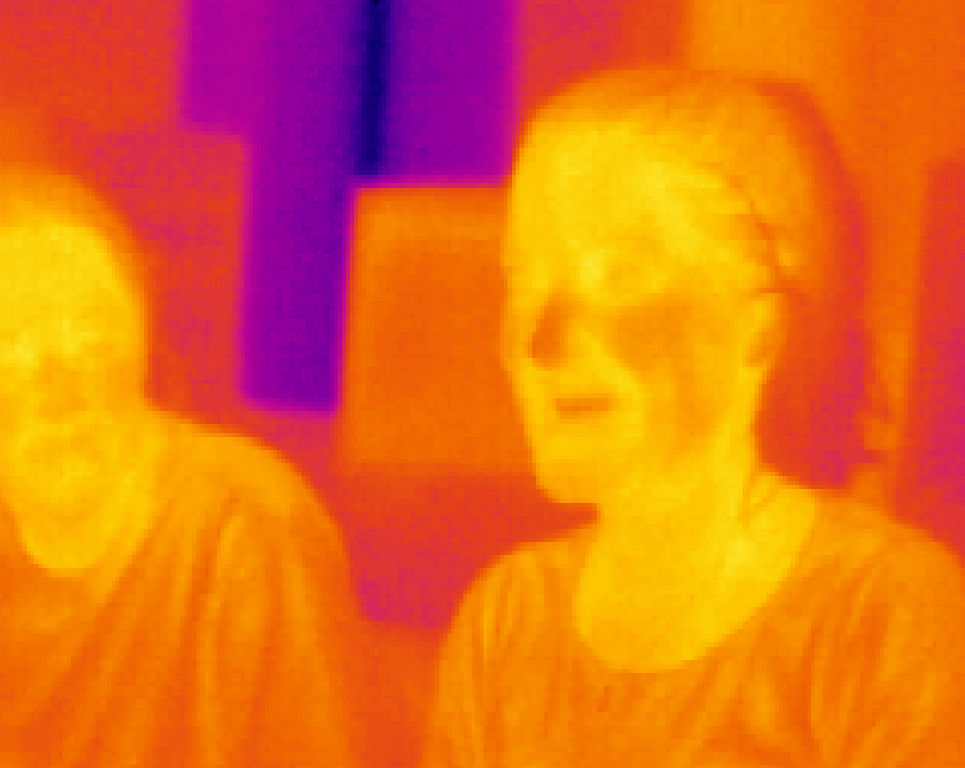Project Title: Wide-angle sensor with micro-lens
Lars Lighting Sp. z o. o. in consortium with Łukasiewicz Research Network – Institute of Microelectronics and Photonics (leader) implemented the Project co-financed by the National Centre for Research and Development as part of the 4th Poland-Berlin-Brandenburg competition in the field of photonics.

The result of the work of the project Consortium will be the development of a thermometry-based sensor that allows to distinguish objects in the room on the basis of image analysis that can be obtained from measuring the temperature distribution in the rooms.
The market offers IR matrices based on semiconductor elements based on indium antimonide (InSb). They are typically used in advanced FLIR thermal imaging cameras. However, these are too expensive matrices to build the sensor planned in the Project on their basis. In recent years, thermoelectric (IR) detectors based on MEMS technologies have started to appear.
It will find versatile use in many areas:
lighting control, building automation (ventilation, heating), alarm systems, and as fire protection elements. New infrared detectors will be used, made on the basis of multi-layer thermoelectric structures (Thermoplile), which, following the development of MEMS technology, have recently become commercially available. In order to build the requested sensors based on IR detectors, many technological challenges will have to be faced.
Sein innovatives Element wird die Möglichkeit sein, den Raum in mehrere Zonen zu unterteilen (die anfängliche Annahme geht von 4 Zonen aus, ihre Anzahl kann jedoch größer sein) und die Zusammenarbeit mit dem Gebäudemanagementsystem (BMS), das Heizung, Klimatisierung und Lüftung unterstützt. Currently, there is usually only one room temperature sensor, fitted at the entrance or on the wall. The possibility of measuring the temperature in the zone and combined with additional information about the presence of people will allow for very sophisticated control of heating and air conditioning. This will contribute to energy savings. Similar functionality can be obtained in a car, where there are usually 2 climate zones. The proposed solution will include the possibility of introducing 4 or more comfort zones in offices.
The algorithm for detecting critical temperatures, i.e. those that may result in a fire hazard, will be another very innovative functionality. Current available sensors react to smoke that appears only during a fire. Infrared IR detectors, the more accurate they give the measurement results, the greater the temperature difference between the detector and the measured object. Detecting temperatures of 100, 200 or even 400 degrees should not be a problem. The main research issue will be the elimination of disturbances, i.e. the elimination of heaters, cookers and other heat sources that are not a fire hazard.
This will allow the elimination of false positives, i.e. unwanted alarms in the absence of danger.
Combining a fire alarm with information about the presence of people still in the rooms will also be a very innovative functionality, supporting the elimination of threats and the effectiveness of evacuation, firefighters will first be able to go to the rooms where people are staying.

Picture: http://www.ite.waw.pl/aktualnosci/wiadomosci/?ite-cms-page=2&ite-cms-id=1000196
Contact
Office Poland
st. Zygmunta Vogla 8 (1st floor)
02-963 Warsaw
office@larslighting.pl
Registration data
Lars Lighting sp. z o.o.
Ul. Zygmunta Vogla 8
02-963 Warsaw
NIP – 5342502351
Lars Lighting Spain
Lars Lighting SL
Calle Unamuno no 1, Escalera B,
Piso 3, Local 3B,Orihuela Costa, 03189, Alicante, España
office@larslighting.com
Lars Lighting Czech Republic
Lars Lighting s.r.o.
Ostravská 594/4 Český Těšín,
Czechy
office@larslighting.com
Lars Lighting U.S.A.
Lars Lighting LLC
804 Derby Course Saint Charles,
IL 60174 United States
office@larslighting.us
Lars Lighting Schweiz
Lars Lighting GmbH
Mühlegasse 18 / Gebäude K
6340 Baar
office@larslighting.com
Lars Lighting Thailand
Lars Lighting LLC
No. 624/115 Aspace ID, Asoke-Dindaeng Road Dindaeng district Bangkok 10400
tiger.hu@larslighting.com
